
HOME > Conference Program > Plenary Lectures
Plenary Lectures
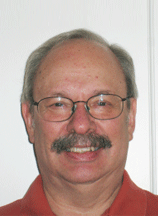
- mRNA Processing and Roles in Human Disease
- October 9 (Wed), 15:20-16:10, Rm. 401
Organizer and Chair: Chanseok Shin, Ph.D. (College of Agriculture and Life Sciences, Seoul National University, Korea)
- James L. Manley, Ph.D.
- Department of Biological Sciences, Columbia University, USA
James L. Manley is Julian Clarence Levi Professor of Life Sciences at Columbia University. Currently, he is a member of the U.S. National Academy of Sciences, American Academy of Arts and Sciences, and American Association for the Advancement of Science. He received his B.S. degree in Biology from Columbia University and Ph.D. degree in Molecular Biology from State University of New York at Stony Brook/Cold Spring Harbor Laboratory. After having worked at Massachusetts Institute of Technology, he has been in the Department of Biological Sciences at Columbia University since 1980. He has served on the Editorial Boards of several leading scientific journals, including Molecular Cell, Genes and Development, Nucleic Acids Research, and RNA, and is currently an Editor of Molecular and Cellular Biology and the new journal, eLife.
Dr. Manley’s laboratory has made key contributions to our understanding of gene expression and its regulation in eukaryotic cells. For example, Dr. Manley has provided groundbreaking insights into two essential steps in gene expression, i.e., the splicing and polyadenylation of mRNA precursors. Dr. Manley’s discovery of the prototypical SR protein splicing factor ASF/SF2, and subsequent characterization of this and related proteins, have made significant contributions to our understanding of pre-mRNA splicing: His research has focused on molecular mechanisms by which SR protein family members regulate alternative splicing, and control splicing more generally under a variety of physiological conditions.
Dr. Manley has played pioneering roles in understanding 3’ processing, i.e., polyadenylation of mRNA precursors, by identifying, purifying, cloning and characterizing many of the surprisingly large number of proteins required for this reaction, and then by elucidating specific regulatory mechanisms, important in cell growth and differentiation.
Of equal importance, Dr. Manley has shown that transcription, splicing and polyadenylation are all mechanistically linked: RNA polymerase II, in addition to its role in transcription, also functions directly in both splicing and polyadenylation. This requires a unique region of the polymerase, known as C-terminal domain of RNA polymerase II (CTD), which consists of a long, repetitive sequence that is highly phosphorylated. Currently, Dr. Manley’s lab is studying how the CTD functions, and how its interactions contribute to gene control. His lab is also continuously studying how transcription factors, such as the PAF complex and TLS/EWS family, function to link transcription and subsequent RNA processing and how importantly these and other factors contribute to human disease.
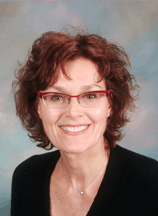
- “Alu”strious Effects on Human RNA Metabolism: Post-Transcriptional Gene Regulation by Inter- and Intra-Molecular Alu Element Base-Pairing
- October 9 (Wed), 17:00-17:50, Rm. 401
Organizer and Chair: Jungwook Hwang, Ph.D. (Graduate School of Biomedical Science and Engineering, Hanyang University, Korea)
- Lynne E. Maquat, Ph.D.
- Department of Biochemistry and Biophysics, School of Medicine and Dentistry, University of Rochester, USA
Dr. Lynne Maquat is a director of Center for RNA biology and J. Lowell Orbison Endowed Chair and Professor at University of Rochester, New York. She has been dedicated to the development of RNA biology research. Her honors and elected positions include a president of RNA society (2006), the American Association for the Advancement of Science (2006), RNA Society Lifetime Achievement Award in Service (2010), National Academy of Sciences (2011), Batsheva Fellowship, Israel Academy of Sciences and Humanities (2012-2013), University of Rochester Presidential Diversity Award (2013), and many others with countless invited seminars/meetings.
The Maquat lab was first to describe that (i) nonsense-mediated mRNA decay (NMD) degrades newly synthesized mRNAs, (ii) the role of pre-mRNA introns in defining which translation termination codons trigger NMD, (iii) the idea that splicing deposits a “mark” on newly synthesized mRNAs that persists until the first round of translation, (iv) the NMD factors UPF2, UPF3, UPF3X, SMG5, SMG6 and SMG7, (v) exon-junction complexes (EJCs), (vi) the pioneer round of translation, (vi) the mechanism by which NMD depends on the cap-binding protein CBP80, (vii) the critical importance of translational repression to NMD, (viii) the cytoplasmic recapping of mRNAs, and (ix) rules for binding of the UPF1 to mRNA 3'-untranslated regions (3' UTRs).
In related studies, the Maquat lab discovered Staufen 1(STAU1)-mediated mRNA decay (SMD). STAU1 bound to a 3' UTR STAU1-binding site (SBS) leads to mRNA degradation. In SMD studies, unexpected roles for cytoplasmic long noncoding RNAs (lncRNAs) and Alu elements were discovered to base-pair with the 3' UTRs of mRNAs via partially complementary SINEs to create an intermolecular SBS and trigger SMD. The crystal structure of the STAU1 dimerization interface was solved by the Maquat lab. Dimerization enhances the efficiency of SMD by enhancing the interaction of STAU1 with UPF1.
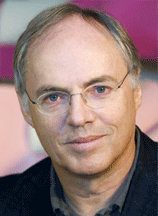
- Lgr5 Stem Cells in Self-Renewal and Cancer
- October 10 (Thu), 14:00-14:50, Rm. 401
Organizer and Chair: Kang-Yell Choi, Ph.D. (Department of Biotechnology, College of Life Science and Biotechnology, Yonsei University, Korea)
- Hans Clevers, M.D., Ph.D.
- Hubrecht Institute, Royal Netherlands Academy of Arts and Sciences & University Medical Center Utrecht, Netherlands
Hans Clevers obtained his MD degree in 1984 and his PhD degree in 1985 from the University Utrecht, the Netherlands. His postdoctoral work (1986-1989) was done with Cox Terhorst at the Dana-Farber Cancer Institute of the Harvard University, Boston, USA.
From 1991-2002 Hans Clevers was Professor in Immunology at the University Utrecht and, since 2002, Professor in Molecular Genetics. From 2002-2012 he was director of the Hubrecht Institute in Utrecht . Since 2012 he is President of the Royal Netherlands Academy of Arts and Sciences (KNAW).
The intestinal epithelium is the most rapidly self-renewing mammalian tissue. Lgr5 is a gene transcribed in cycling, crypt base columnar cells at the crypt base. Using lineage tracing experiments the Lgr5+ve cells were identified as the stem cells of the intestinal epithelium. Furthermore, Lgr5+ve stem cells can initiate ever-expanding organoids in vitro. The Lgr5+ve stem cell hierarchy of differentiation is maintained in these organoids. Thus, intestinal crypt-villus units can be built from a single stem cell in the absence of a non-epithelial cellular niche.
Although, Lgr5 stem cells persist life-long, crypts drift toward clonality quickly. The cellular dynamics are consistent with a model in which the stem cells divide symmetrically, and stochastically adopt stem or transient amplifying cell fates after cell division.
Lgr5 stem cells are interspersed between differentiated Paneth cells, which produce all essential signals for stem-cell maintenance. Co-culturing of sorted stem cells with Paneth cells dramatically improves organoid formation. Genetic removal of Paneth cells in vivo results in the concomitant loss of Lgr5 stem cells.
Intestinal cancer is initiated by Wnt pathway-activating mutations in genes such as APC. Deletion of APC in stem cells, but not in other crypt cells results in neoplasia, identifying the stem cell as the cell-of-origin of adenomas. Moreover, a stem cell/progenitor cell hierarchy is maintained in stem cell-derived adenomas, lending support to the “cancer stem cell”-concept.
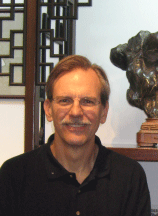
- Integrins as Molecular Machines
- October 11 (Fri), 11:30-12:20, Rm. 401
Organizer and Chair: Chang-Duk Jun, Ph.D (School of Life Science, Gwangju Institute of Science and Technology, Korea)
- Timothy A. Springer, Ph.D.
- Immune Disease Institute, Harvard Medical School, USA
Timothy A. Springer did his Ph.D. at Harvard with Jack Strominger and his postdoc with Cesar Milstein in England. Since 1977, he has been at Harvard Medical School, where he is Latham Family Professor of Biological Chemistry and Molecular Pharmacology and at Children’s Hospital. He discovered the first adhesion receptors of hematopoietic and endothelial cells. He found that LFA-1 bound ICAM-1, an inducible molecule on endothelium, and that CD2 bound LFA-3. Springer discovered that the T cell receptor for antigen and chemoattractants activate adhesiveness of LFA-1.
Springer was the first to define relationships among members of what later became known as the integrin family, by demonstrating that the adhesion molecule LFA-1 and the complement receptor Mac-1 contained α subunits that were identical and β subunits that were homologous in sequence. Springer discovered three sequential steps that mediate leukocyte emigration from the bloodstream: selectin-mediated rolling, chemoattractant stimulation, and integrin-dependent firm adhesion. Springer became a structural biologist to understand the mechanism of integrin activation, and visualized the atomic structures of these molecules bound to ligands and revealed unusually large conformational changes that activate their adhesiveness.
Two of his discoveries, LFA-1 and LFA-3, were made into FDA-approved drugs, efalizumab and alefacept. Springer’s discovery that antigen-specific responses and diapedesis required adhesion receptors inaugurated an important new class of therapeutics for autoimmune diseases, the selective adhesion molecule inhibitors. His prizes include the Basic Research Prize from the American Heart Association, the William B. Coley Medal from the Cancer Research Institute, and the Crafoord Prize in Polyarthritis from the Royal Swedish Academy of Sciences. He is a member of the U.S. National Academy of Sciences and the American Academy of Arts and Sciences. His >500 scientific articles have >90,000 citations and a Hirsch index of 142. Springer founded LeukoSite, is currently a board member of three biotech companies, and sits on the Board of Trust of Children’s Hospital.
Current research areas in the lab include integrins and their ligands, the TGFβ/BMP family, von Willebrand factor, structural vaccinology of Malaria, single molecule laser tweezers studies of force as an allosteric effector, and single molecule fluorescence studies on integrin activation in intact cells.
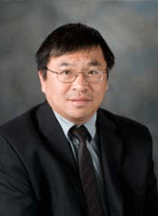
- Protein-Protein Interaction Network in DNA Damage Response and Tumorigenesis
- October 11 (Fri), 14:00-14:50, Rm. 401
Organizer and Chair: Jong-Soo Lee, Ph.D. (College of Natural Sciences, Ajou University, Korea)
- Junjie Chen, Ph.D.
- Department of Experimental Radiation Oncology, The University of Texas MD Anderson Cancer Center, USA
Junjie Chen is professor and chair of the Experimental Radiation Oncology Department at University of Texas MD Anderson Cancer Center. He received B.S. in Genetics and Genetic Engineering from Fudan University and Ph.D. in Cell and Molecular Biology from University of Vermont in 1993. He completed postdoctoral training at Harvard Medical School before becoming an Assistant Professor at Mayo Clinic in 1999. He was promoted to tenured Associate Professor at Mayo Clinic in 2004 and moved to Yale University as Professor in 2006. He moved again to the University of Texas MD Anderson Cancer Center as department chair in 2009.
The overall goal of Dr. Chen’s laboratory is to understand the molecular mechanisms underlying genomic instability and tumorigenesis. The maintenance of genomic integrity following DNA damage depends on the coordination of DNA repair with cell cycle checkpoint controls. The integrity of the DNA damage response pathway is crucial for the prevention of neoplastic transformation, as suggested by the fact that many proteins involved in these pathways are tumor suppressors, which include p53, ATM, Chk2, BRCA1 and BRCA2. His group discovered and studied many new components involved in DNA damage pathways, which is still a focus of his research program. Dr. Chen’s group also ventured into other areas of genomic instability, including mitotic regulation, cellular senescence and aging. More recently, his lab begun to study several cancer signaling pathways that are important for tumor survival, proliferation and metastasis.




















